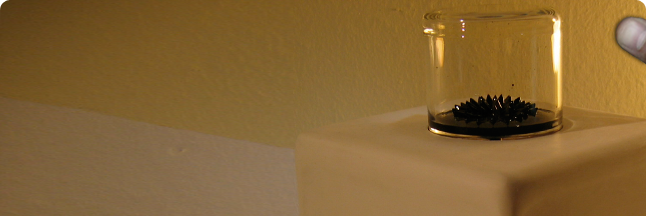Simply Fascinating
For the Bachelor graduation project at the Department of Industrial Design at the University of Technology Eindhoven the choice was made to start with a technology instead of a context or idea. And a most fascinating material it is. Titled ferrofluid, this oily liquid was invented by NASA in the 60’s. It basically consists of many micro iron particles in a carrier fluid made up by oil and a substance to keep the iron particles from sticking together.
The Product
The product houses the ferrofluid and uses it as part of the interface for a minimalistic audio player. By rotating the glass knob, the product switches on, dimly illuminating the four sides and their respective symbols. A light symbol is selected when any of the four sides is touched, and increases in brightness. This action is followed by the ferrofluid acting as a visualization of the selected modality.
The fluid is animated by a vertically moving neodymium magnet beneath the knob. For example, the level of volume is displayed in the size of the ferrofluid sphere. When selecting tracks, the ferrofluid diminishes in size when reaching the end of a album or artist.
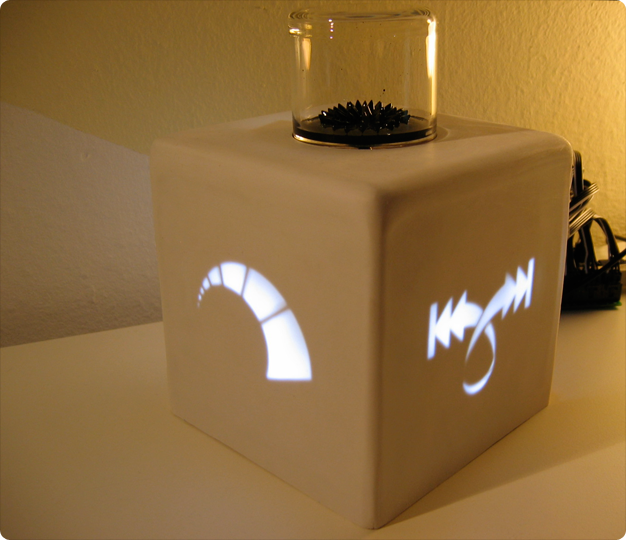
The product sports a certain wow-factor concerning the ferrofluid. People are stunned by its behavior and properties. And when this wow-factor lessens, a functional and minimalistic product remains. The product is targeted at high-end consumers who enjoy products which differentiate themselves from others by qualitative features.
With the interface hidden when not in use, the user is not confused or confronted with options which are not of importance at that given moment. With this light-interface being hidden, there is also more focus on the ferrofluid.
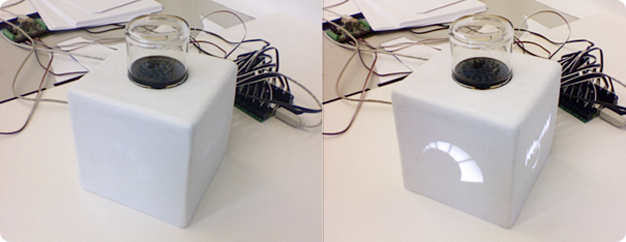

The Process
Ferrofluid’s Origin
The original function of ferrofluid was to create a lubrication and cooling fluid for complicated joints. The magnetic properties of the ferrofluid made it stick to the joint itself without having to be encased in a complicated container. More contemporary applications include a liquid sealant inside hard drives, radar absorbent material for military vehicles and removing heat between the voice coil inside loudspeakers.
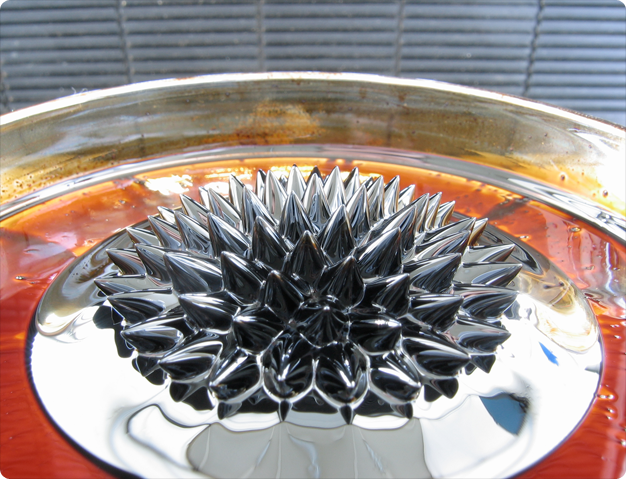
Just Add Magnetism
The captivating feature of ferrofluid presents itself when being confronted with a magnet. The iron particles try to follow the lines of the magnetic field caused by the magnet, ultimately resulting in a stunning formation. The photos are all of a small quantity of ferrofluid in a petri dish with different magnets beneath it.
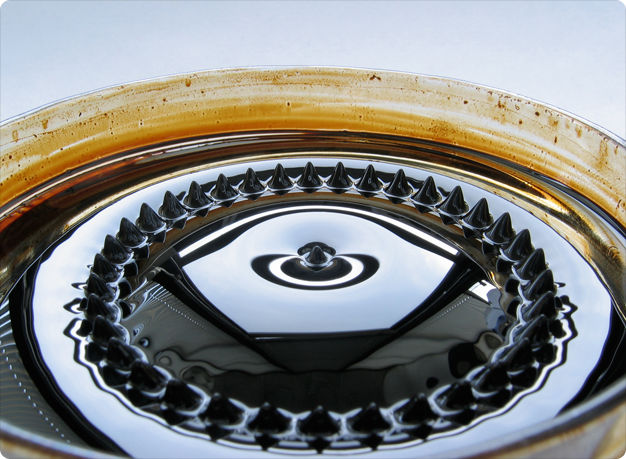
DIY Electromagnet
In order to test its characteristics an electromagnet was build and incorporated into a housing for the petri dish. This showcased the immediate response of ferrofluid to the magnetic field. After various brainstorms the concept focused on using ferrofluid’s visualization to showcase the properties of a simple audio player.
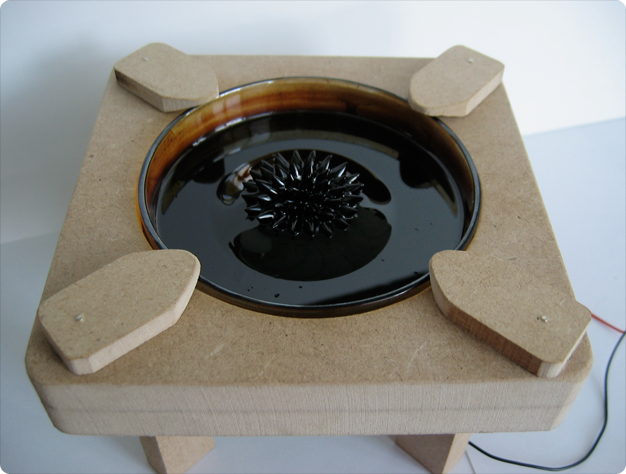
Form and Function
The next step centered around finding an appropriate form to house the ferrofluid. The goal here is to design something abstract, not taking away any attention from the ferrofluid. This resulted in some abstract shapes with a knob on top to control the modalities of the audio player.
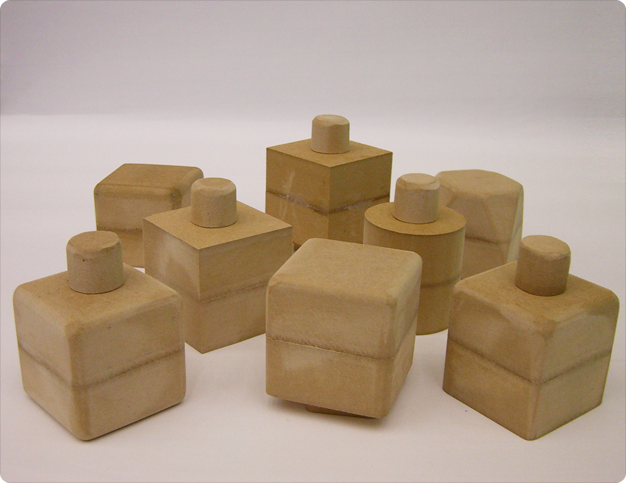
MDF Models
A second set of full scale models explored some design directions. The choice was made to use a simple cube for the main housing with a glass knob on top.
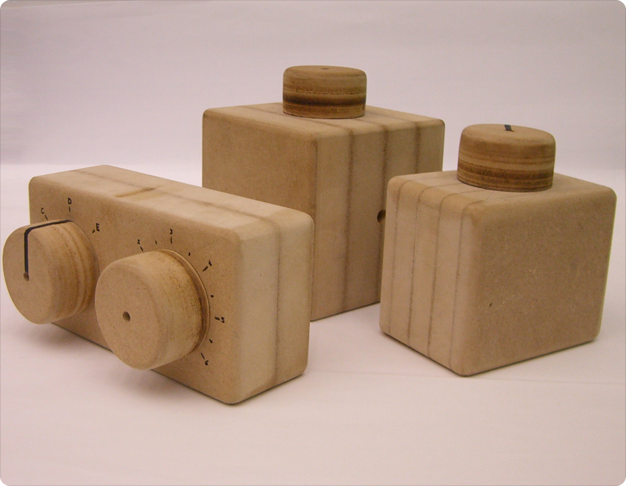
Designing the Interface
To maintain a minimalistic exterior and interface the product will run only four controls. On/off, volume, track selection, and shuffle. Turning down the volume all the way will result in the song being put on pause. The symbols for each of these controls were designed to match a recognizable style in accordance to the existing universal symbols. Also, the symbols match a rotational motion, as coherent to the rotation of the glass knob.
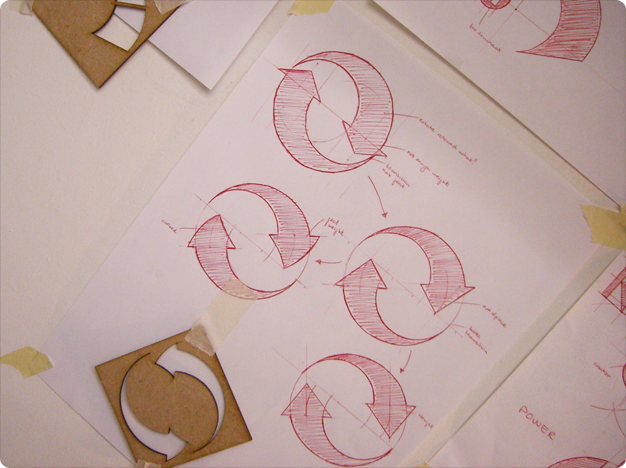
The Light Interface
After many design iterations, the four final versions of these symbols were laser-cut in various sizes and used as the pattern layout behind the plastic encasing of the product.
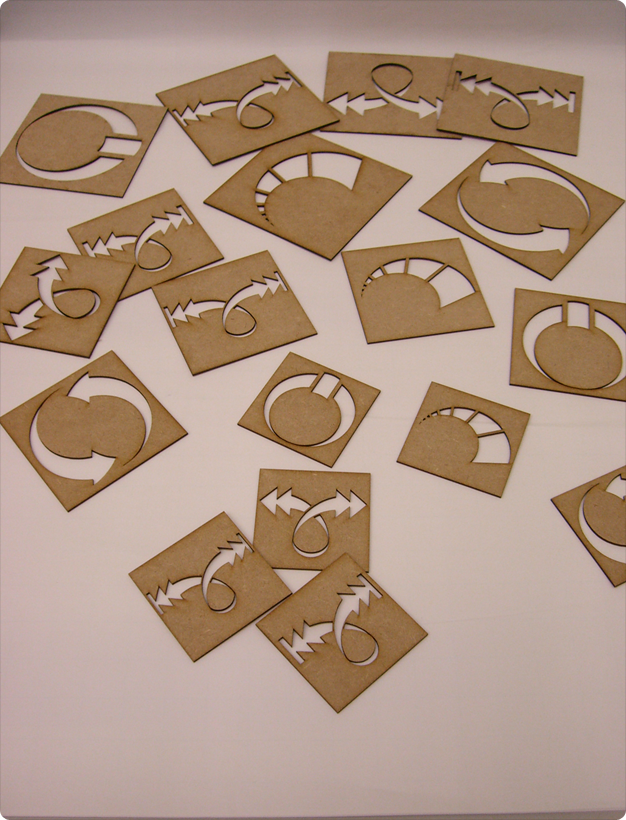
The laser-cut panels were backed by series of LED’s in a similar pattern. This created an interface invisible behind the outer shell when not in use. When the product is activated this interface will appear on the sides of the cube.
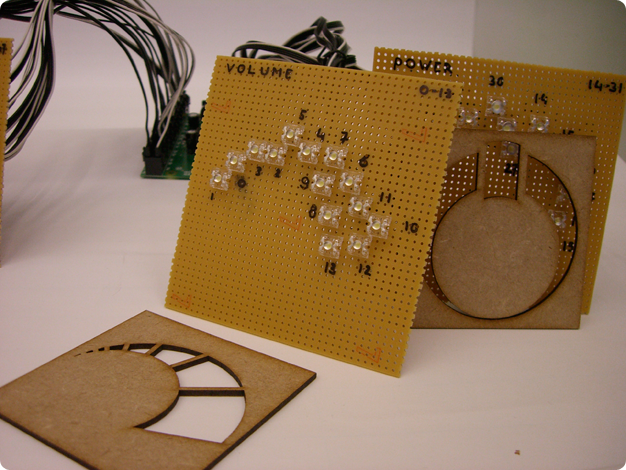
The interface works as follows: When the product is switched off, it can easily be switched on by rotating the knob clockwise. The four sides light up their respective symbols. Each of these symbols is made touch-sensitive by means of a induction field created by a sensor connected to a long wire. This wire runs behind the symbol and is invisible from the outside.
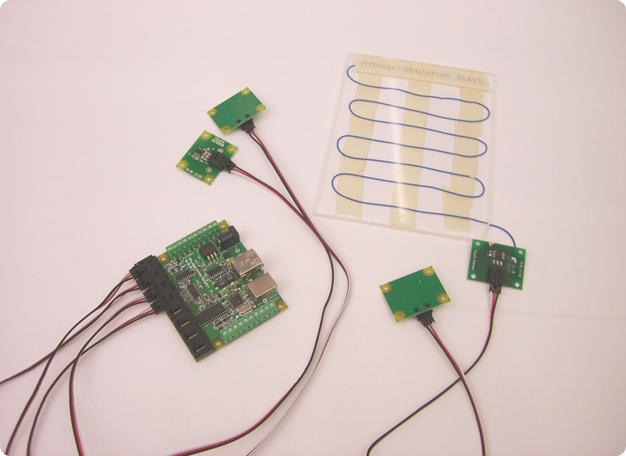
Materials
The next step focussed on a proper material for the final prototype. A selection was made of various white and clear plastics. The white would create the best possible contrast to the black ferrofluid. The clear plastic will create a good flow with the glass knob.
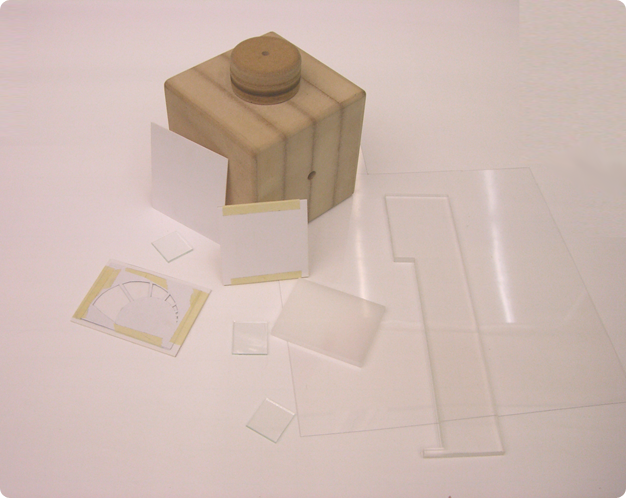
The Glass Knob
In order to house the ferrofluid a complicated glass encasing had to be conjured. The problem with ferrofluid is its ability to oxidize on almost any surface. Various technical drawings were made to overcome the problem of ferrofluid coming in contact with the glass knob.
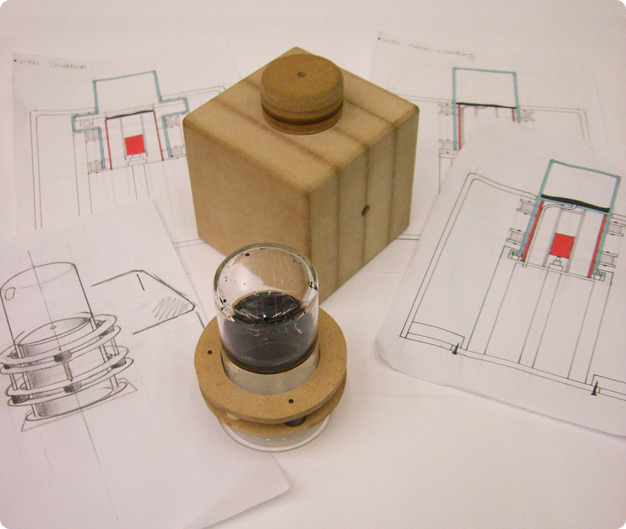
Developing the Coating
However, during this process contact was kept with the Department of Chemistry at the University of Technology, Eindhoven. There an expert in coatings was found. Together with his expertise a custom coating was developed. This resulted in the option to use a glass knob which could come in contact with the ferrofluid. An example of this can be seen below: the container with the coating is on the left, and the one without on the right. The photo was taken right after both glass bottles were shaken.
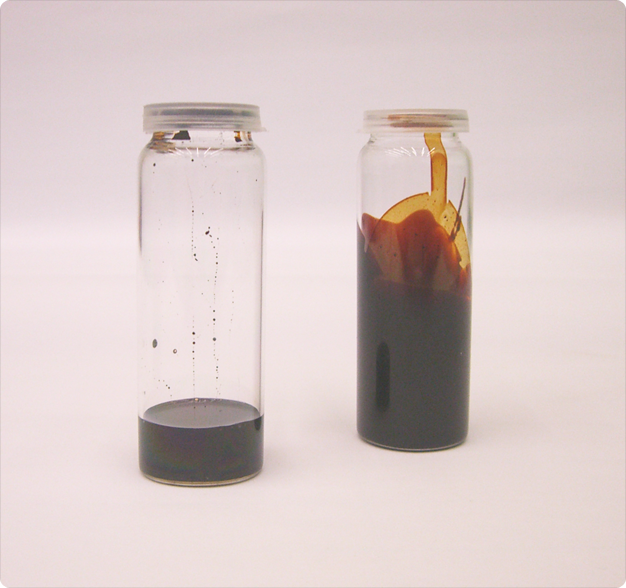
With the skills from the Glass Lab at the University, a custom glass knob was constructed. After coating the interior and filling it with ferrofluid, the knob was sealed with a special plasma glue.
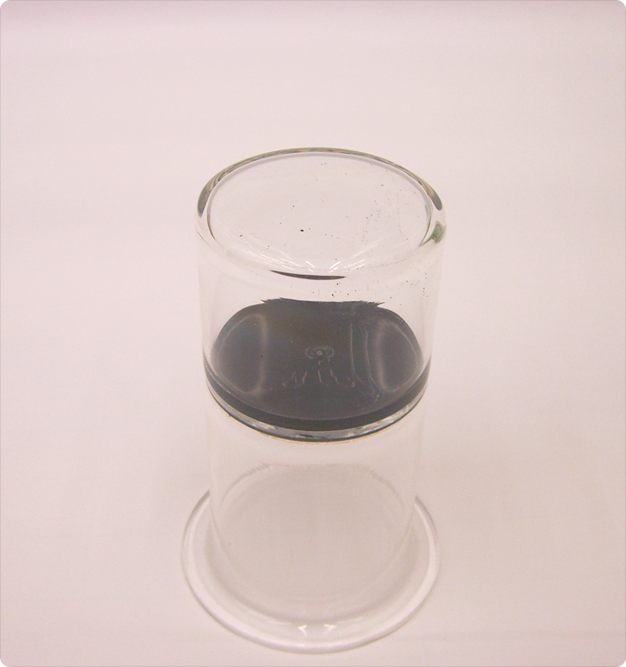

Stats
completed in: January, 2008
time spent on project: 8 weeks of pure fascination
stakeholder: Department of Industrial Design
